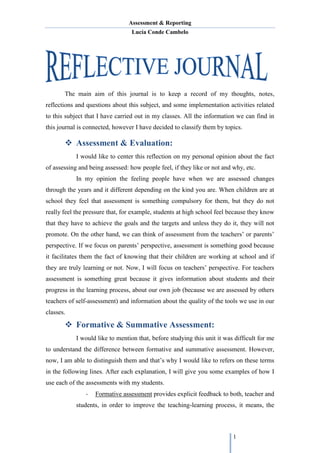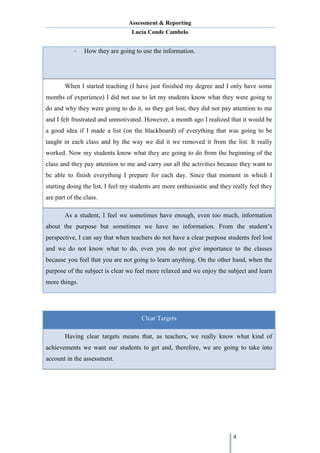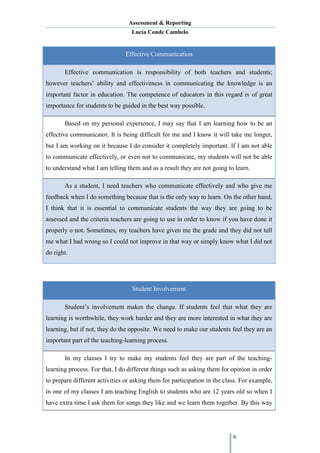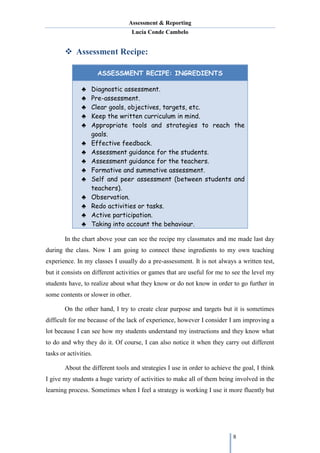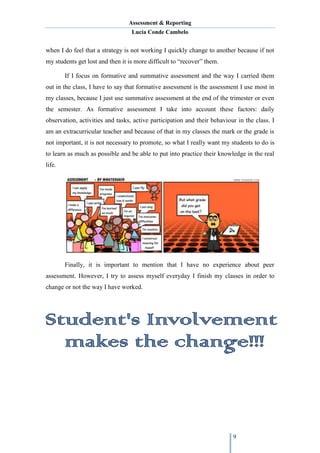This document discusses assessment and reporting in education. It begins by outlining the purpose of keeping a journal on assessment topics and classroom activities. It then explores formative and summative assessment, noting the difference is that formative assessment provides feedback during instruction while summative assessment measures growth after instruction. The document also examines the cycle of inquiry in teaching and learning, emphasizing the importance of reflection. Key aspects of quality assessment like clear purposes and targets are connected to the author's experiences. The relationship between assessment and evaluation is defined, and ingredients for an effective assessment approach are presented.
